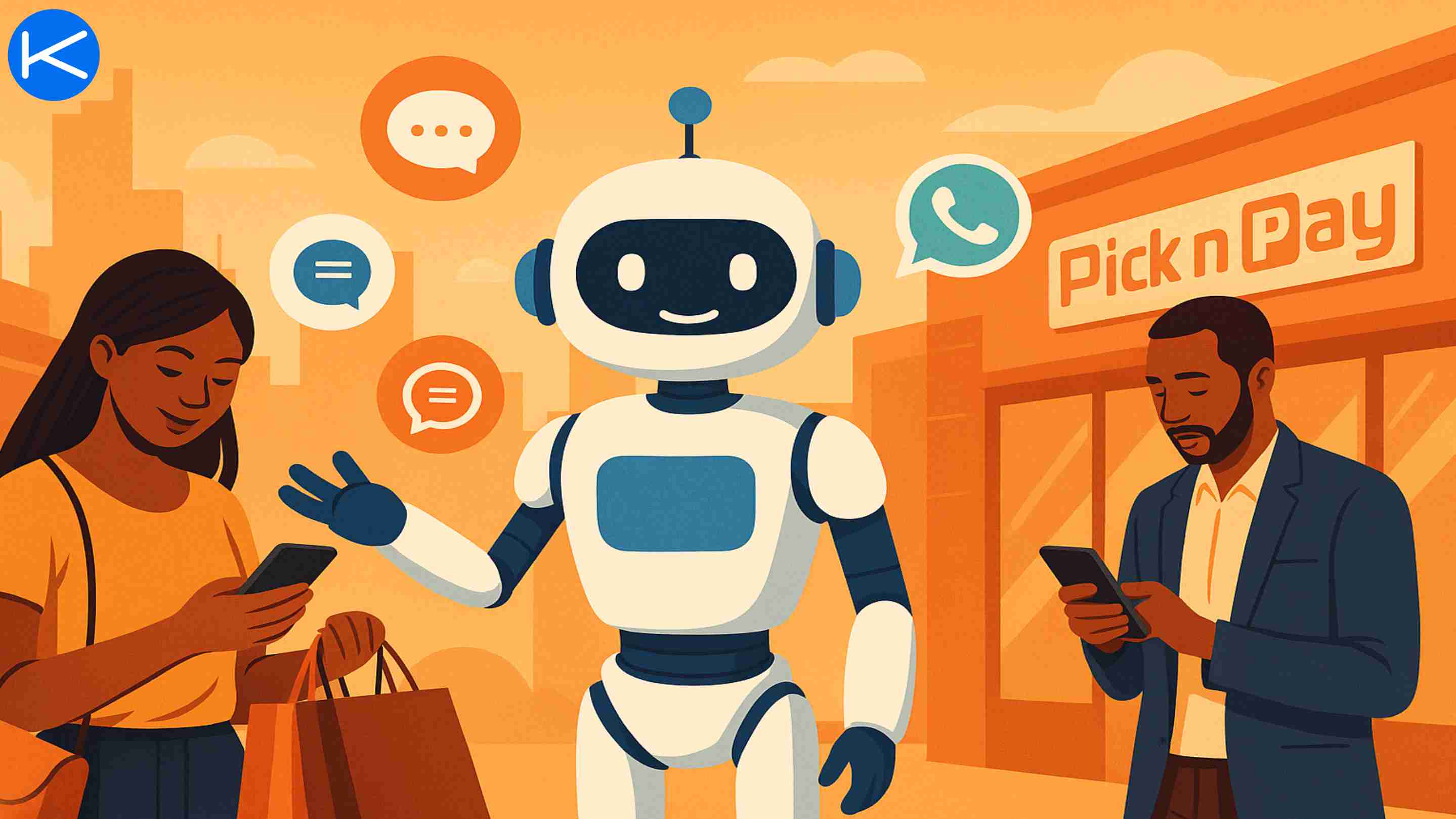Lethabo Moroka
9 months
Simplifying Business Operations: How Automation is the Game Changer You Didn’t Know You Needed
Imagine running a business where routine tasks handle themselves, and customer service never sleeps—sounds like a dream, right? Well, with the power of AI and chatbots, that dream is now a reality. In today’s digital economy, a staggering 86% of executives recognize that operational efficiency is essential for achieving business growth. As companies grapple with an ever- evolving marketplace, the pressure to streamline operations has never been greater. In an era characterized by rapid technological advancement and ever-increasing consumer expectations, businesses must adapt swiftly to thrive. This reality prompts important questions: How are companies responding to these challenges? What strategies can they adopt to ensure they not only survive but flourish? For some advice, read this article about AI resources and advice for small businesses some other time, but for now let us continue with this article. This article will cover on the following:
- Overview
- Understanding Automation and Its Key Components
- The Role of AI in Automation
- Challenges Associated with Integration of Automation
- Solutions To These Challenges
- Current Trends Advancements in AI Technologies

Overview
The pressing need for efficiency highlights the emerging role of automation in business processes. Automation, particularly through the integration of artificial intelligence (AI) and chatbots, offers solutions that can significantly enhance operational effectiveness. With AI- powered chatbots capable of handling up to 80% of routine customer inquiries, businesses can redirect valuable human resources toward more strategic tasks. This not only maximizes productivity but also enhances customer satisfaction by providing instant, 24/7 service.
However, the transition to increased automation is not without its challenges. Critics argue that an over-reliance on AI may lead to job displacements and a potential loss of the human touch that often defines effective customer service. According to a report from McKinsey, up to 800 million global workers could be displaced by automation by 2030. This statistic raises critical ethical questions about the balance between efficiency and the socio-economic implications of technology adoption. As companies embrace the benefits of automation, they must also grapple with their responsibility toward their workforce.
While the potential for increased efficiency through automation is compelling, it’s essential to also acknowledge the potential pitfalls. Automation systems require substantial initial investments in technology and talent, with an estimated 41% of companies reporting that financial constraints hinder their adoption of new tools. Additionally, the integration of AI and chatbot technologies does pose risks, such as data security concerns and the challenges associated with ensuring accurate responses from AI systems.
Nevertheless, the advantages of adopting automation technologies cannot be ignored. Organizations that successfully integrate AI and chatbots into their operations may realize significant cost savings, demonstrated by a 30% reduction in operational costs reported by companies who have embraced these technologies. Moreover, the enhanced data analytics capabilities provided by AI allow for real-time decision-making, which can further optimize business processes and improve customer relationships.
As the dialogue around automation continues, it is clear that businesses must find a balance between embracing technological advancements and maintaining a focus on their workforce and customer engagement. The evolution within this space is rapid, and understanding the dynamics at play will be crucial for companies seeking to leverage automation for sustained growth and efficiency.
Understanding Automation and Its Key Components
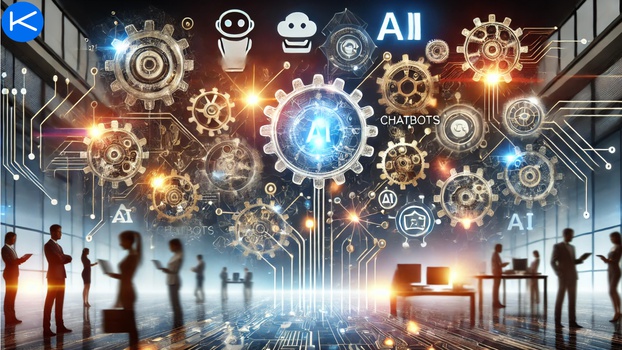
Automation, at its core, refers to the use of technology to perform tasks without human intervention. In a business context, this translates to streamlining processes, enhancing efficiency, and reducing operational costs. Automation can be viewed through different lenses, including task automation, process automation, and intelligent automation.
Defining Automation in Business
In the fast-paced world of business, automation plays a pivotal role in optimizing workflows and improving productivity. According to Gartner, organizations implementing automation can reduce operational costs by up to 30%. This is particularly important in an era where businesses need to do more with less—enhancing profitability while maintaining high service levels.
Types of Automation Tools
There are four primary types of automation tools available to businesses:
- Robotic Process Automation (RPA): This type of automation deploys software robots to handle repetitive tasks that were previously performed by humans. For instance, data entry and processing are typical applications of RPA.
- Business Process Automation (BPA): BPA involves automating complex business processes and functions beyond just individual tasks. It integrates multiple applications and processes, making it ideal for workflows involving numerous steps across various departments.
- IT Process Automation (ITPA): ITPA focuses specifically on automating IT operations tasks, such as system monitoring and backups, thus minimizing downtime and human errors.
- Intelligent Automation (IA): Combining advanced technologies such as Artificial Intelligence (AI) and Machine Learning (ML) with traditional automation methods, IA offers a transformative approach that can adapt processes based on data-driven insights.
The Role of AI in Automation
Artificial Intelligence significantly enhances the capabilities of automation tools. By allowing systems to learn from data and make informed decisions, AI turns basic automation into intelligent solutions. According to McKinsey, businesses that integrate AI in their operations can boost productivity by up to 40%.
Chatbots and Operational Efficiency
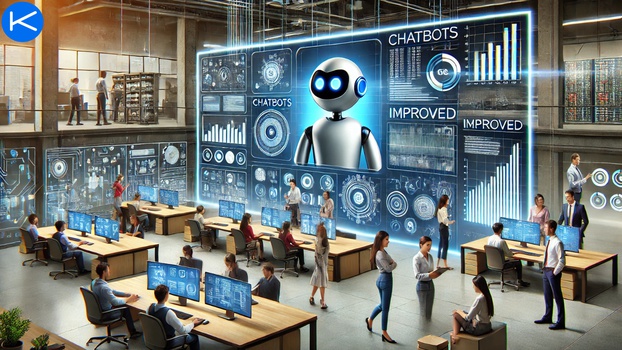
Chatbots, as a subset of AI, represent a growth area in customer service automation. They can handle a large volume of inquiries simultaneously, providing instant responses to customer questions or facilitating transactions without the need for human involvement. This not only improves the customer experience but also frees up human agents to deal with more complex queries. Statista reports that by 2024, the global chatbot market is expected to reach $1.34 billion, affirming the increasing trust businesses are placing in this technology.
However, while the benefits of automation through AI and chatbots are apparent, critics argue that the increasing reliance on these technologies raises concerns about job displacement. According to a report by the World Economic Forum, automation may displace 85 million jobs by 2025. On the flip side, it is projected to create 97 million new roles, many of which will require advanced skills.
In summary, the balanced discussion around automation focuses not just on its immediate benefits but also on the broader implications for the workforce and the economy. Organizations must approach automation with a strategic mindset that considers both technological and human factors.
While challenges exist, the overall trajectory towards automation and the incorporation of AI and chatbots in business operations is steeped in potential for enhancing productivity and efficiency.
Ultimately, finding the right balance between automation and human skill sets will be crucial as businesses navigate this transformative landscape.
Future Directions
Looking ahead, the integration of more sophisticated AI models promises additional enhancements for chatbots. The rise of multi-modal AI, which combines information from text, voice, and images, is expected to create more comprehensive and effective chatbot experiences. As organizations invest more in developing conversational AI solutions, they must balance innovation with robust ethical considerations and consumer transparency.
The current trends in automation technologies reflect a dynamic landscape shaped by innovative AI and NLP advancements. While businesses are embracing these technologies at an increasing rate, they must also navigate the complexities and potential drawbacks associated with their adoption. Understanding these aspects will be critical in leveraging automation technologies effectively in the future.
Challenges Associated with Integration of Automation
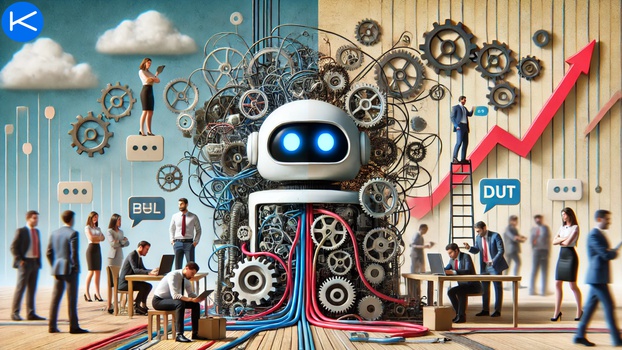
The integration of automation, AI, and chatbots into business processes presents several challenges that organizations must navigate. One of the most pressing concerns is:
Challenge 1:Data security → According to a report by Cybersecurity Ventures, cybercrime is projected to cost the world $10.5 trillion annually by 2025. As businesses become increasingly reliant on automation technologies, they inadvertently create new vulnerabilities. The handling of sensitive personal information raises significant concerns; breaches can occur if proper safeguards are not in place. These threats not only affect customer trust but can also lead to hefty fines and legal repercussions.
Challenge 2: Integration of these technologies with existing systems → Another significant challenge is the integration of these technologies with existing systems. A survey by Deloitte revealed that 70% of organizations encountered difficulties in scaling automation efforts due to complex legacy systems. This integration can be slow, costly, and resource-intensive, potentially hindering an organization’s ability to reap the promised benefits of automation. If the AI solutions implemented are incompatible or require overhauls of existing infrastructure, organizations may find themselves investing far more time and money than initially anticipated.
Challenge 3: Employee resistance → Moreover, employee resistance presents a notable obstacle for businesses. Many employees fear that automation will threaten their job security, leading to a decline in morale and productivity. A Gallup study found that only 30% of employees felt confident about the impact of automation on their jobs. Addressing employees' fears and misconceptions about automation is paramount; failure to do so can result in pushback against new technologies, decreasing overall effectiveness and hindering the successful deployment of AI solutions.
Challenge 4: Potential for miscommunication with customers → Additionally, there exists a potential for miscommunication with customers. While chatbots offer significant advantages in handling inquiries efficiently, they are not infallible. A study by Oracle showed that 80% of customers had a negative experience with a chatbot, often stemming from misunderstandings or lack of nuanced responses. These limitations in current technology can result in frustrated customers, and if businesses are not prepared to supplement these digital interactions with human support, they risk damaging customer relationships.
Businesses must approach the implementation of automation, AI, and chatbots with a critical eye. Balancing the benefits of increased efficiency against the very real challenges of security, integration, employee sentiment, and customer experience is essential for any successful strategy. As the technology in this area continues to evolve, addressing these challenges will remain an ongoing necessity.
Solutions To These Challenges

Solution 1: Implement Pilot Programs → To mitigate the risks associated with full-scale automation adoption, organizations should consider initiating pilot programs. These small-scale projects allow companies to test AI and chatbot features in a controlled environment, providing valuable insights into system performance and user interaction without the commitment of a company-wide rollout. Research indicates that organizations implementing pilot programs see a 30% improvement in integration success rates when compared to those skipping this step.
Solution 2: Thorough Staff Training → The cornerstone of successful automation lies in employees’ proficiency with the new tools. Comprehensive training programs should be rolled out that not only cover technical skills but also emphasize emotional intelligence and problem-solving capabilities, particularly to enhance customer interactions. According to a report by IBM, companies that invest in employee training enjoy a 24% increase in productivity, highlighting the significance of arming staff with the right knowledge and tools.
Solution 3: Selecting the Right Technology Partners → Choosing the appropriate technology partners is critical in the automation journey. The selected vendors should not only provide robust technology solutions but also demonstrate a solid understanding of the industry and a commitment to customer service. A 2022 study conducted by McKinsey revealed that 45% of companies that carefully vetted their technology partners reaped customer satisfaction scores 20% higher than their competitors. This reinforces the idea that the right partnership can significantly affect the success of AI and chatbot implementation.
Solution 4: Prioritizing Customer Satisfaction → As organizations move towards automation, it is crucial to keep customer satisfaction as a central focus. Businesses must integrate feedback loops into their systems, allowing customers to express their experiences with AI and chatbots. Analytics should be employed to assess the data for any potential areas of improvement promptly. A report from Salesforce shows that 76% of consumers expect companies to understand their needs and expectations, emphasizing the necessity for automation solutions to be customer-centric.
Solution 5: Monitoring and Iterating → Post-implementation, it is essential for organizations to continuously monitor their automation systems’ performance. Regularly reviewing key performance indicators (KPIs) can provide insights into areas needing adjustment or improvement. According to Statista, companies that implement iterative monitoring and agile methodologies report 23% higher customer retention rates. This data indicates that a proactive approach to managing changes can have a direct positive impact on customer loyalty.
Solution 6: Addressing Human Concerns → Finally, it is important to address any fears employees may have regarding automation. Open communication and transparency about the role of AI in the workplace can help alleviateconcerns. Organizations might consider forming focus groups or forums where employees can voice their thoughts and suggestions regarding AI implementations. A survey by PwC found that 74% of employees are concerned about AI's potential impact on their jobs, reinforcing the need for inclusive discussions surrounding technological advancements.
Implementing these strategies and best practices could pave the way for a smoother transition to automation. While the challenges are significant, the potential rewards, such as enhanced efficiency, improved customer engagement, and increased employee satisfaction, make it a worthwhile endeavor for businesses looking to innovate in the digital age.
Current Trends Advancements in AI Technologies
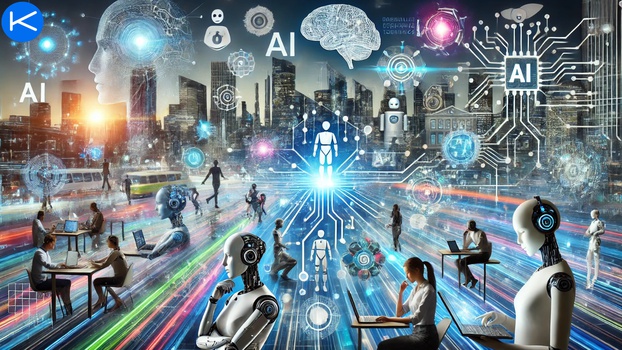
As the landscape of business operations evolves, the future of automation is anticipated to dramatically reshape various sectors. Predictions suggest that by 2025, a staggering 70% of business processes could be automated to some extent, according to a survey conducted by McKinsey Global Institute. This transformation is expected to derive from a more sophisticated use of automation technologies combined with the implementation of artificial intelligence (AI) and machine learning (ML). If you want to read Trends in detail, visit this article that talks about Top AI Trends to Watch in 2025.
Recent advancements in Artificial Intelligence (AI) have significantly enhanced the capabilities of automation technologies. In particular, machine learning algorithms are increasingly being deployed to make real-time decisions based on data analysis. According to a report by McKinsey, 50% of companies have adopted AI in at least one business function, showcasing a substantial rise from previous years.
- Natural Language Processing Enhancements: Natural Language Processing (NLP) has evolved considerably, allowing chatbots to understand context, tone, and sentiment more accurately. Recent developments include transformer models, like GPTs, which have been key in generating human-like text. A study by Deloitte found that 62% of organizations employing NLP technologies saw improvements in their customer engagement metrics, illustrating the direct impact on business outcomes.
- Increased Adoption Rates: Organizations across various sectors are increasingly adopting AI-enhanced chatbots for customer service roles. According to Statista, the global chatbot market is expected to reach $1.34 billion by 2024, reflecting a compound annual growth rate (CAGR) of 24.9%. This growth can be attributed to the need for 24/7 customer support, improved customer interaction, and operational efficiency.
The role of AI and chatbots is poised to expand significantly. Currently, businesses deploy chatbots primarily for customer service interactions, with reports indicating that over 40% of organizations utilize chatbots in some capacity. However, future advancements could see them taking on more complex roles, such as providing personalized marketing recommendations and assisting in real-time decision-making processes. A report by Gartner predicts that by 2026, AI will be integrated into over 80% of customer interactions, fundamentally changing how businesses engage with their customers.
Furthermore, emerging technologies such as robotic process automation (RPA), Internet of Things (IoT), and 5G networks are on the horizon, promising to create a more interconnected and data-driven environment. RPA is forecasted to increase labor productivity by 30% by 2030, showing immense potential for efficiency gains. IoT devices, coupled with 5G, will enable faster data transmission, allowing businesses to collect and analyze vast amounts of data in real- time, which will enhance decision-making and operational efficiency.
Expert opinion varies on the implications of these developments. Some analysts argue that increased automation will lead to widespread job displacement, with up to 800 million global workers potentially losing their jobs to automation by 2030, according to a report from the McKinsey Global Institute. Others counter this point, suggesting that while certain jobs may become obsolete, new job categories will emerge, requiring more complex human abilities that cannot be easily replicated by machines. A study by PwC estimates that the net impact of AI on jobs could create 7 million new positions by 2037.
The trend suggests companies should focus their efforts on upskilling and reskilling their workforce to bridge the skills gap. Investing in training programs that enhance employees' digital competencies will be crucial. Furthermore, businesses need to strategically evaluate which processes can be automated while ensuring that they maintain a human element where creativity, emotional intelligence, and critical thinking are required.
Final Thoughts
As we encourage readers to reflect on their own practices, it’s important to consider how AI and chatbots can address specific pain points within their operations. Are there repetitive tasks that drain resources? Can customer interactions be streamlined for greater satisfaction? Thinking critically about these questions can illuminate pathways towards more productive workflows and ultimately drive profitability.
Encouraging a proactive approach, we invite our readers to take the next step: explore the possibilities of automation within your own organization. Whether it’s piloting a KaraboAI chatbot to handle customer inquiries or utilizing AI for data analysis, the opportunities are vast and ripe for exploitation. As we stand on the edge of a significant shift in how business is conducted, one question deserves contemplation: Are you ready to embrace automation and position your organization for future success?

